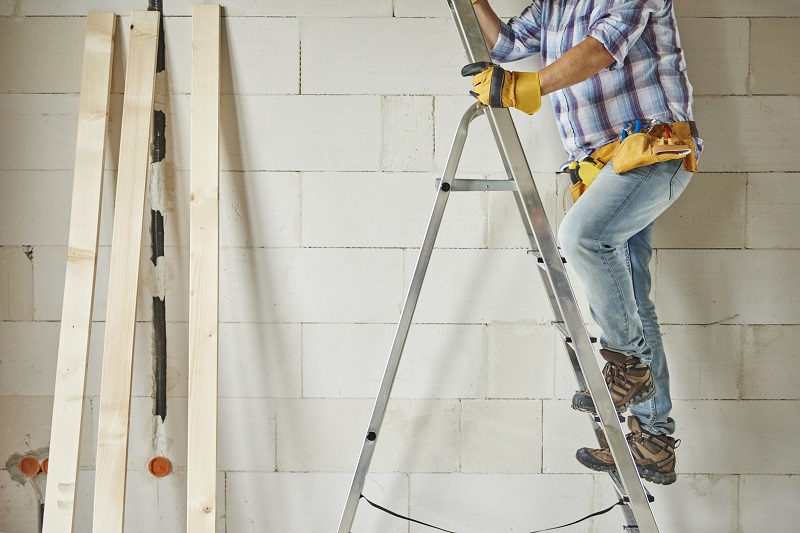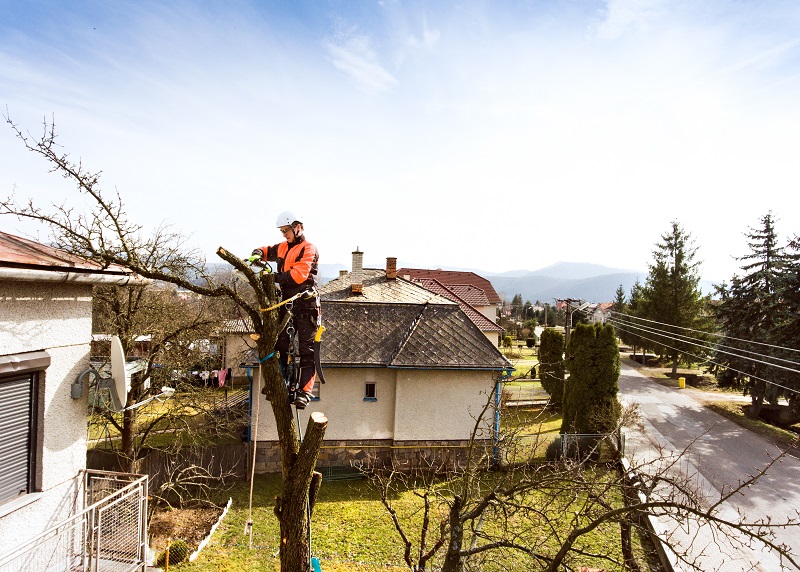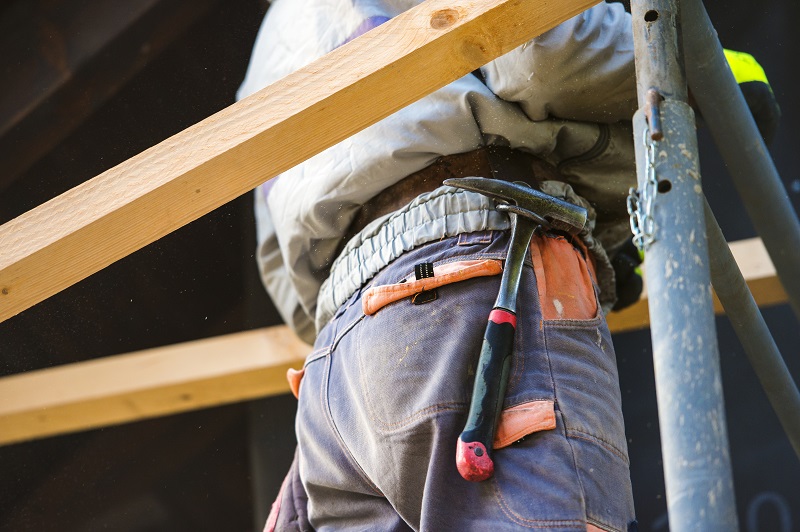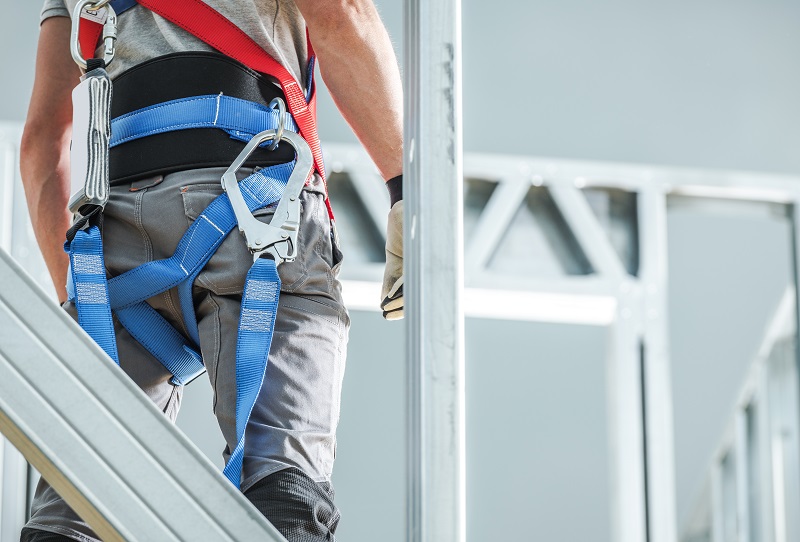Injuries and deaths from falls remains one of the most prevalent yet preventable causes of workplace injuries. It is the leading cause of deaths in the construction industry, and is third leading cause of fatalities in the United States. Recently OSHA fall protection has also been the number one most cited violation throughout the year of 2020.
Companies are required to ensure occupational safety and health in the workplace with a strong focus on fall protection systems to reduce the risk of serious injury and death.
OSHA has established two main fall protection systems:
- fall restraint systems, and
- fall arrest systems.
There are also certain specific requirements for fall protection regarding:
- ladders
- scaffolding,
- holes,
- correct cautioning, and
- training.
We have compiled this comprehensive guide for employers focusing on achieving compliance with OSHA standards of fall protection.

When Is Fall Protection Required?
To ensure a company is compliant with OSHA standards, fall protection is required to prevent employees from falling off platforms and elevated work stations, or into holes in the floor.
When an employee is working over dangerous machinery, fall protection is required no matter the fall distance.
Other instances requiring fall protection include:
- general industry workplaces where the elevation is 4 feet or more,
- shipyards where the elevation is 5 feet or more,
- construction industry where the elevation is 6 feet or more, and
- longshore operations where the elevation is 8 feet or more.
Employers will benefit from performing a hazard assessment to distinguish where the fall risks occur in the workplace. Then, a fall protection plan can be compiled. It’s good practice to anticipate and prevent potential falls rather than applying corrective measures reactively.

What Are the Personal Fall Protection Systems Criteria?
A fall protection system must be put into place on walking-working surfaces as per OSHA safety requirements.
Fall Restraint Systems
These are put in place to prevent workers from falling in the first place. They can be some combination of guardrails, handrails, and toeboards.
Guardrail Systems
- Must include top rails,
- must include midrails,
- must include posts, and
- must be 42 inches high.
Handrail Systems
- All stair rails must be mounted to a wall or partition, and
- must be 30-34 inches above the surface.
Toe Boards
- Barriers must be installed at the base of the working area to stop tools falling off the edge and feet from slipping over the edge,
- must be 4 inches high,
- must be securely fastened, and
- must have less than a quarter-inch clearance above floor level.
Personal Fall Arrest Systems
Fall arrest systems are used to break a worker’s fall and can mitigate or prevent serious injuries and/or death. These consist of an anchor point, connectors, a body belt or harnesses and may include a lanyard, safety nets, deceleration device, lifeline, or an adequate combination of all of these.
Full-body or Chest Harness
The system must be set up to the working surface so that an employee can neither:
- free-fall more than 6 feet, nor
- come into contact with a lower level.
The shock-absorbing component of the system must be set up to ensure an employee comes to a complete stop within 3.5 additional feet after the free-fall distance.
All components must be inspected prior to use. Those subjected to damage, deterioration or the impact loading forces of a free-fall are no longer fit for use and must be removed from service immediately.
Take note that body belts are not considered adequate fall protection without harnesses.
Safety Nets
- Mesh openings must be 6 inches or smaller, and
- safety nets can be used for up to 25 feet below the working surface.

What Fall Protection Standards Must Be Maintained To Uphold Occupational Safety and Health?
Objects and equipment used regularly in the workplace can lead to fall hazards, so OSHA fall protection standards must be maintained to reduce the risk of injury.
Ladders
- Rungs must be parallel and even,
- rungs must be slip-proof,
- wooden ladders must be inspected regularly for damage,
- metal ladders must be protected against corrosion,
- a fixed ladder must have side rails extending 42 inches past the rungs, and
- the top step of a portable ladder must not be used as a platform.
Scaffolding
- Fall protection systems must be tied to an anchor point, not the scaffold,
- scissor lifts 10 feet off the ground require personal fall protection or guardrails, and
- scaffolding must be on a stable surface.
Holes
- Holes with the risk of falling more than 6 feet require a personal fall arrest system, covers, guardrail systems, and
- excavations, wells, pits, and shafts more than 6 feet require guardrails, fences, barricades or covers.
Caution Signs
- Safety, warning and danger signs indicating fall hazards must be used, and
- graphics with safety symbols can be included.
What Are the Fall Protection Training Requirements?
Employees who work in an environment containing fall hazards must be appropriately trained to ensure OSHA safety and health regulations are met.
They must be trained:
- to recognize fall risks in the workplace,
- to know when to use the appropriate fall prevention systems, and
- to erect, maintain, disassemble, inspect and use the different personal fall protection systems correctly.

How Can Insure Compliance Help?
This model establishes your company’s fall protection gaps in:
- awareness: knowing the company’s responsibilities regarding fall prevention,
- process: documenting fall protection policies in a fall protection plan,
- knowledge: training workers on fall protection policies,
- verification: performing inspections to ensure compliance with the policies, and accountability: implementing disciplinary procedures for fall protection violations.
Then, we help you bridge the fall protection gaps to reduce OSHA violations.
We help employers bridge the fall protection gaps by assisting them to:
- perform a hazard analysis,
- implement policies,
- train workers,
- perform inspections, and
- establish accountability programs.
Key Takeaways
OSHA requirements state that fall protection is required when a workplace has platforms, elevated workstations, holes in the floor and uses ladders.
A hazard assessment should be performed to establish the fall risks and determine which fall protection system should be put into place.
Fall restraint systems prevent workers from falling, such as guardrails, handrails, and toeboards. Personal fall arrest systems break a worker’s fall, such as harnesses and safety nets.
Workers must be trained to recognize fall hazards in the workplace and know how to implement the appropriate fall protection measures. This includes knowing how to check that the fall protection system is set up and working correctly.
Insure Compliance can help employers establish the fall hazards at their workplace and create a fall protection plan with policies that can be used to train workers.
If you’d like to evaluate the fall protection safety gaps in your company, contact us today, and we can help you reach OSHA fall protection compliance and meet the safety requirements.
Disclaimer:
Please note that every effort has been made to ensure that the information provided in this guide is accurate. You should note, however, that the information is intended as a guide only, providing an overview of general information available to businesses. This guide is not intended to be an exhaustive source of information and should not be seen to constitute legal, safety or business advice. You should, where necessary, seek your own advice for any issues raised in your affairs.








2 Responses
I wanted to thank you for this fantastic read!! I definitely
loved every bit of it. I’ve got you bookmarked to check out new stuff you
post…
We are going to start posting more again, I got a little busy and we had to update our team!